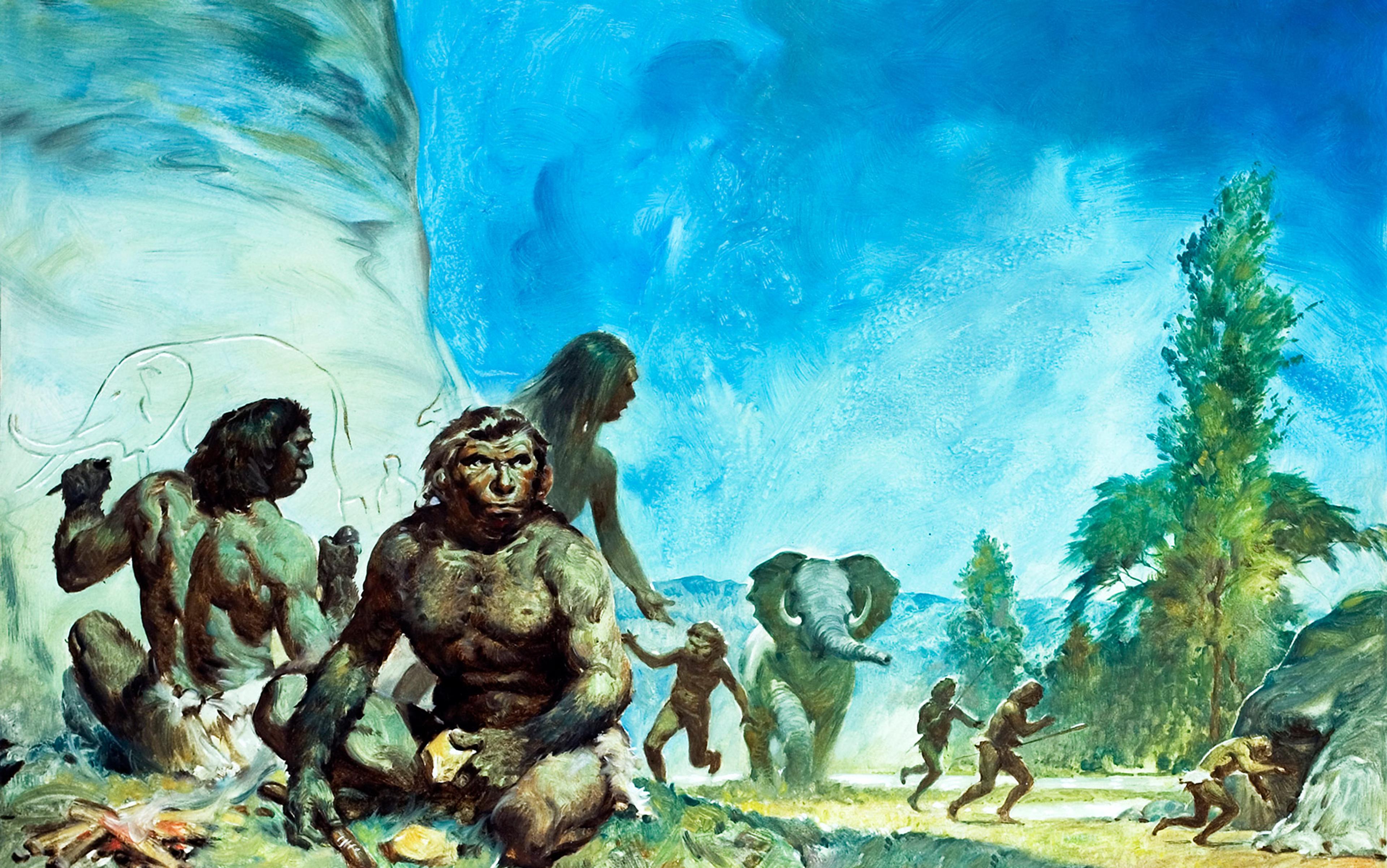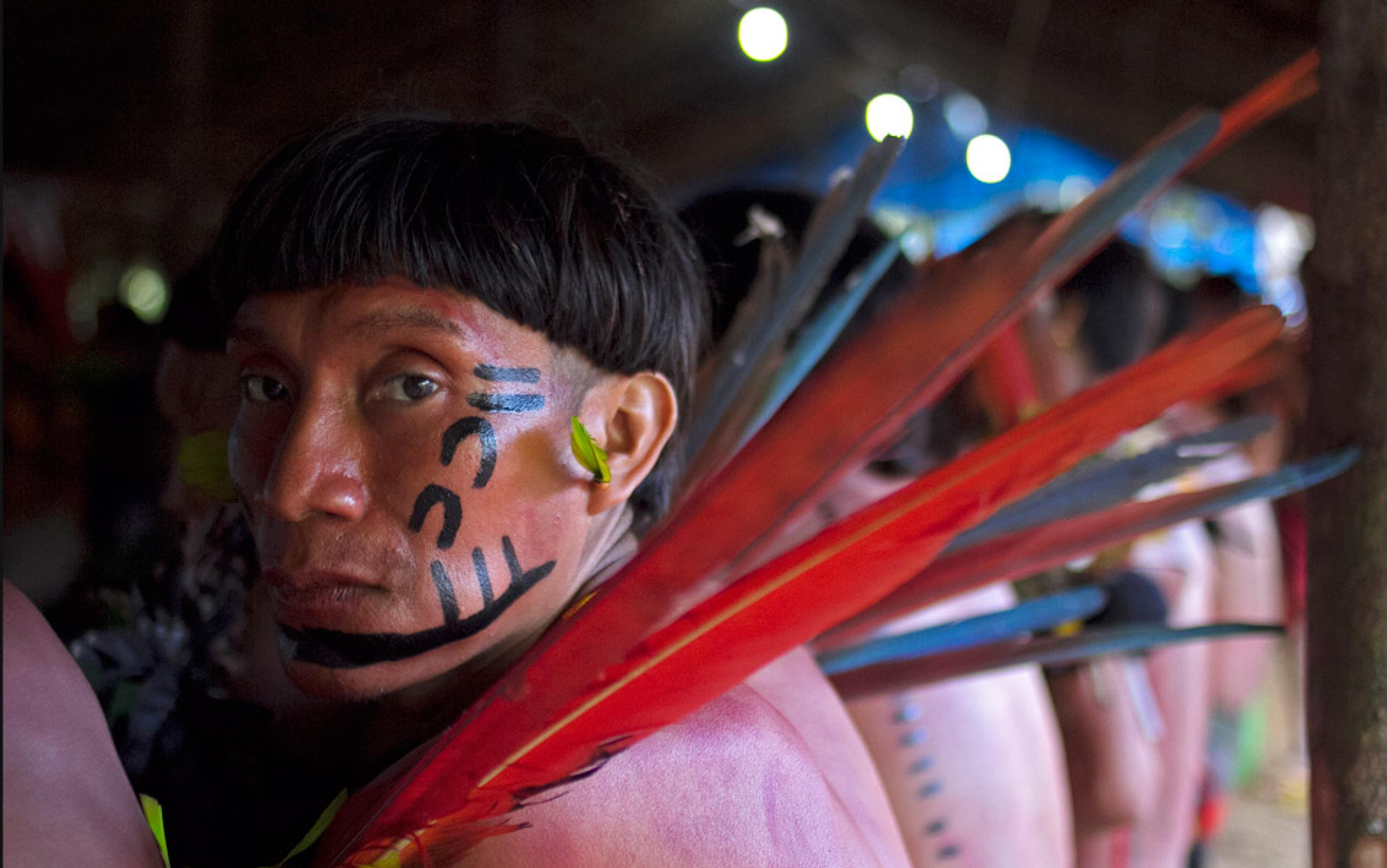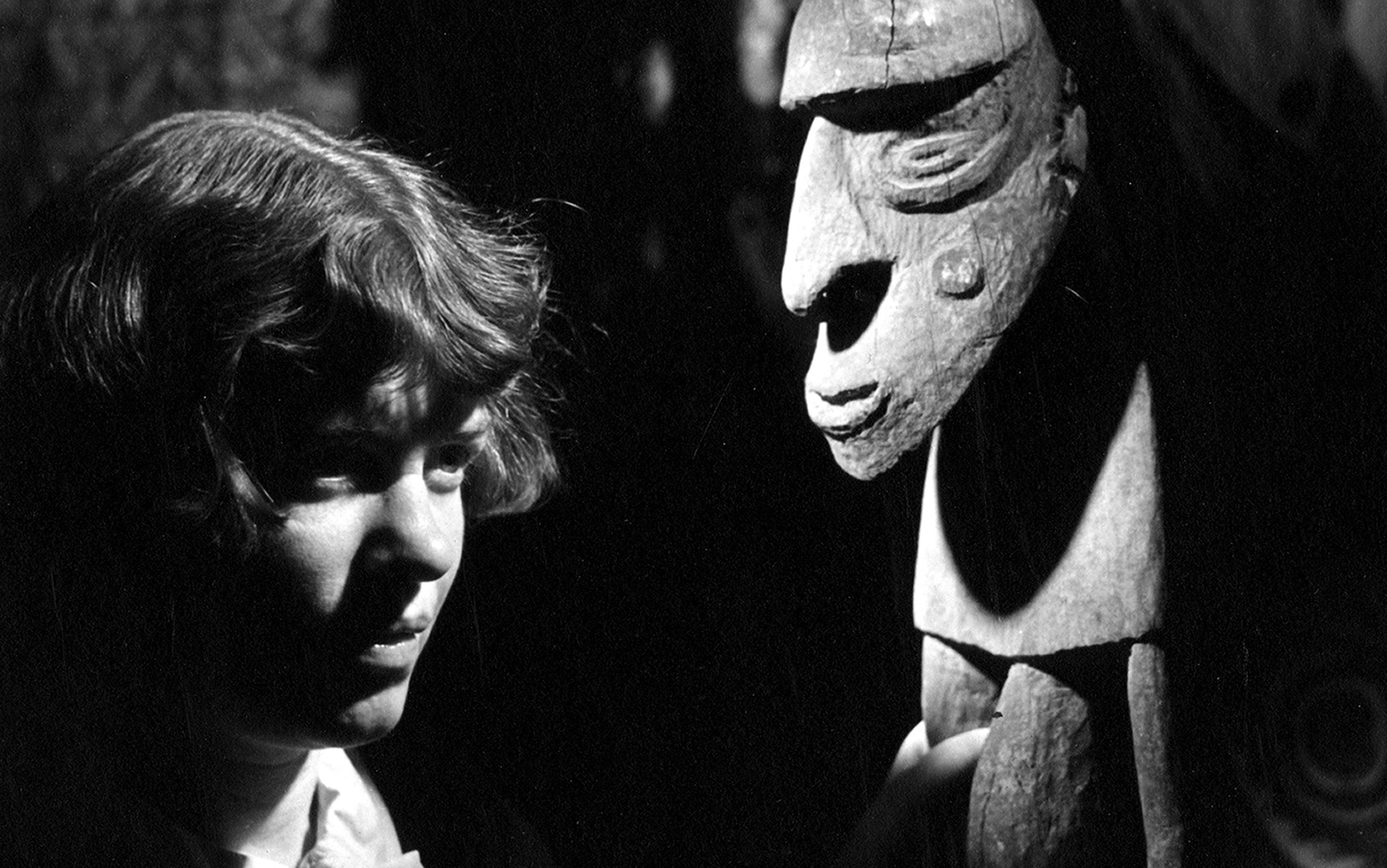The Austrian zoologist Konrad Lorenz embodied the ideal of a white-maned sage. Acclaimed by readers in German and English alike for his books King Solomon’s Ring (1949) and Man Meets Dog (1949), he enjoyed worldwide renown as an expert on the behaviour of fowl, fish and beast. These delightful popular introductions to evolutionary theory and animal behaviour circulated through the publishing world accompanied by photographs that depicted Lorenz surrounded by imprinted goslings at his rural research institute at Seewiesen in Germany. At the age of 60, Lorenz published On Aggression (1963). Readers again loved it, although the stark warnings it offered differed from the cheerful tone of his earlier books.
Lorenz asked readers to imagine the perspective of an unbiased observer on another planet – perhaps Mars. He specified that the observer should possess a telescope of sufficient power so as to perceive the ‘migration of peoples, wars and similar great historical events’, but weak enough that it couldn’t identify individuals. What would this Martian naturalist think of the behaviour of humans on Earth? Lorenz insisted that his imagined observer ‘would never gain the impression that human behaviour was dictated by intelligence, still less by responsible morality’.
In the decades following the Second World War, scientific discussions about human origins took on great moral weight. Reckoning with the aftermath of the Holocaust and the popularity of eugenic theories of race around the world, many anthropologists and zoologists embraced an intellectual framework that united all human beings into a common biological order. They sought to reject theories of brutal domination, hierarchical racial taxonomies, and worse. A closer look at evolutionary origins, they argued, would affirm human commonality.
By describing how and why humans had become the dominant species on the planet, these scientists saw themselves as rescuing human origins from the mists of time, and investing evolutionary histories with righteous authority. Anthropologists and biologists wrote not only for each other but especially for scientifically untrained readers. Their biological vision of a singular human nature resonated with a progressive vision of human history. Just look at how far humans had come from their bestial origins, the scientists reasoned, and imagine the bright future that lay ahead if nations and cultures could work together as human ancestors had in the past. Claims about the nature of human beings echoed long-standing theological and philosophical debates but promised new answers through the power of science.
In aggregate, Lorenz estimated that human social interactions accorded reasonably well with the behaviour of rats. Within small clans, rats could get along peacefully, but would attack unknown individuals. When population densities rose, so too did the rats’ aggression, culminating in lower rates of reproduction and more frequent deadly encounters. Rats, Lorenz claimed, nevertheless possessed several advantages over humans. Humans had no natural means of regulating population size, and after the advent of nuclear weapons would have no capacity to regenerate the species. Through their own technological ingenuity, humans had placed themselves on the brink of extinction.
Lorenz’s pessimism in On Aggression felt out of place when compared with postwar scientific conversations about a universal human nature. Mid-20th-century anthropologists, zoologists and palaeontologists had emphasised that cooperation had enabled our human ancestors to survive the scorching heat of the Pleistocene savannah. This consensus also maintained that learning to share food was tightly bound to advances in communication within early human communities. Together with the ability to walk on two legs and increased intelligence, this led to the origins of sedentary life through animal husbandry and agriculture. Scientists thus sought to explain the conundrum of how violence had originated in human cultures and culminated in acts of war.
The postwar reconstruction of the behaviour of human ancestors required drawing broadly from the human sciences. Palaeoanthropologists contributed, though fossils were rare and dating mechanisms imprecise. The work of cultural anthropologists proved crucial too. They described the behaviours and customs of nomadic communities who gathered food and hunted animals for sustenance. Cultural anthropologists and palaeoanthropologists both promoted environmental factors as crucial to defining behaviour in those human communities. It was a levelling view, applying the same environmental standard as applied to any species. Life in the Arctic required igloos built from bricks of snow, just as life on the savannah led to abodes built of thatch and grass. As humans migrated, variations in the climate of their new habitats led to an efflorescence of human cultures around the globe.
While acknowledging this cultural variation, postwar scientists were keen to emphasise the underlying biological unity of ‘mankind’. Was there a fundamental nature shared by all human beings? They argued yes. All humans exhibited the same core behaviours: living in defined families, sharing in responsibilities for acquiring and preparing food, raising children, and participating in a larger civil society. By emphasising humanity’s shared nature in publications written for nonscientific audiences, biologists and anthropologists hoped to convince their lay readers that atrocities based in eugenic convictions could never be repeated. They established a universal human nature that clearly differentiated all modern humans from a common, animalistic past. This political and moral purpose infused the postwar human sciences.
Dominance hierarchies attracted scientists’ attention long before the Second World War, but it was only in the 1960s that such hierarchies were rewritten in deep time. This new long view found dominance relations, where members of a society defer to the strongest individuals, in a life on the African savannah populated by human ancestors. Even in the 1930s, most palaeoanthropologists thought that human origins lay in Asia. So they looked to find fossilised evidence of ancient humans in Indonesia and the Gobi Desert. But a series of fossil discoveries in the arid climes of southern and eastern Africa constituted mounting evidence that the birthplace of Homo sapiens lay there. This history of a single human origin, in Africa, resonated both with the pan-African pride that characterised the decolonisation of the continent and with Western visions of Africa as a surviving remnant of primitivity.
The logic of one essential human nature, united into a ‘family of man’, was thus reborn amid postwar dreams of a better, more equitable world. Within this context, using observations of contemporary hunter-gatherer communities to extrapolate the behaviour of ancient human ancestors seemed to presume that some peoples and cultures were less advanced than others. The project no longer accorded easily with the antiracism prominent in postwar liberalism. Primates and other nonhuman animals, however, offered a possible way out. Scientists could study fossils and social species living in environments ecologically akin to those occupied by human ancestors without the whiff of the colonial past.
‘The female wants her affection,’ Ardrey wrote, ‘but she wants it at a good address’
By the 1960s, Lorenz was far from alone in his dire assessment of human nature. On Aggression was published in English within a year of Robert Ardrey’s The Territorial Imperative (1966) and Desmond Morris’s The Naked Ape (1967). First making his name as a playwright, Ardrey in the 1950s went on assignment for Reporter magazine, tasked with producing a series of articles on African politics. The experience turned his attention to the study of human nature. In South Africa, Ardrey met the palaeoanthropologist Raymond Dart and became entranced by his account of human nature as originating in the moment when our ancestors picked up a bone or sharp rock and realised it could be used to kill. Ardrey was gripped. He titled his first book on the subject African Genesis (1961), and wrote: ‘Not in innocence, and not in Asia, was mankind born. The home of our fathers was that African highland reaching north from the Cape to the lakes of the Nile. Here we came about – slowly, ever so slowly – on a sky-swept savannah glowing with menace.’ African Genesis failed to influence many scientists. But it sold sufficiently well that the publisher signed a further volume: The Territorial Imperative.
Here, Ardrey’s focus shifted from the details of palaeoanthropology to select examples of animal behaviour. This allowed him to more fully link expressions of human conduct today to our deep evolutionary past. Ardrey’s descriptions of the mating behaviour of kob antelope, for example, established a clear pattern of male violence in mating behaviour. Male kob antelope competed through ritualised combat to hold the best territories during mating season, with scarcely a second thought for females. Female kob, for their part, entered the mating areas to seek out the best territories with scarcely a second thought for their proprietors. ‘The female wants her affection,’ Ardrey wrote, ‘but she wants it at a good address.’ It was not hard to see his implicit comparison with male bravado in humans and female concern with financial security.
In The Naked Ape, Morris placed far greater emphasis on the importance of courtship in defining human sociality than had Ardrey. Influenced by Alfred Kinsey’s mid-century reports on human sexuality, and William Masters and Virginia Johnson’s recent work in sexology, Morris described the naked ape (ie, Homo sapiens) as ‘the sexiest primate alive’. He contended that early humans had lost their furry pelt in order to facilitate sexual caresses, and in the process gained an emergent sociality. Educated in the scientific study of animal behaviour under Nikolaas Tinbergen – one of Lorenz’s career-long interlocutors – Morris earned his PhD and then went to work at London Zoo. He hosted the popular live TV show Zoo Time, introducing younger viewers to animal antics and imparting biological facts. Like Ardrey, Morris excelled at popular science and produced a follow-up book more ominous in tone than his first.
In The Human Zoo (1969), Morris turned his attention to the plight of increasingly urban human populations. Other primates supplied the bulk of his evidence, especially baboons, which occupied the same kind of savannah environment that palaeoanthropologists now associated with early human ancestors. Ecologically, baboons might retreat to the safety of the lush forest but spent most of their time in the ‘tougher world of the open country’ that mandated stricter social hierarchies to keep everyone alive. To Morris’s way of thinking, cities could never be ‘urban jungles’. Rather, they resembled large, self-imposed cages. In cities, Morris claimed, humans could no longer rely on the simple status relationships that governed small groups. Social interactions became more complex. This inflicted social strain on the leaders of ‘packs, prides, colonies, or tribes’ who often dealt with threats from outside the group rather than concentrating their attention on the internal factors, such as parental care, that allowed the group to thrive.
Readers and reviewers lumped Morris, Ardrey and Lorenz together as promoting a powerful new vision of humans as animals. (To be fair, each author saw different moral systems and imperatives emerging from their research, but these nuances mattered less to readers than their shared zoomorphic vision.) The view of humans as specialised animals carried implications for who among the scientists could truly judge what it meant to be human. If our ecological past determined human nature, then reconstructing the biological processes that had created humanity required a retrospective view. No longer defined by the rise of agriculture or true language, the conditions that gave rise to human nature now included our ability to avoid predators, to hunt, to kill and to survive on the dangerous open plains of the savannah. Lorenz, Ardrey and Morris shared the underlying view that aggression, violence and murder helped to shape human nature. Their work thus posed a pressing existential question: how had humans ever managed to cooperate? The answer, it seemed, would be found by scientists with expertise in animal behaviour.
Then, as now, science written in a colloquial register played a distinct role in crafting popular views of the world, the cosmos or human nature – in essence, answers to our deepest philosophical questions. If as historians we want to understand how, and why, ideas about human nature have changed, these sources are essential reading. The contemporary implications of books by Lorenz, Ardrey and Morris were hard to miss. As the 1960s wore on, student protests and police brutality, the war in Vietnam, political assassinations of Martin Luther King, Robert Kennedy and others, were beamed across the world. These events filled homes and TV screens with flickering scenes of violence and its aftermath, images that would never have been allowed on air if they were not real. Networks promised to reduce the amount of violence they broadcast but always returned to the same conundrum: given the nature of world events, it did not seem that reducing the frequency of pistol-whippings in crime dramas or shootings in Westerns was warranted. That the newly popularised scientific consensus pointed to the aggressive nature of men through comparisons with animal kin seemed evident in world affairs.
Was Man innately aggressive? Was the hunt a sufficient metaphor for conceptualising what it meant to be human? The linguistic ambiguity of ‘man’ meant it could refer either to the human species as a whole or simply to its male members. (This was sometimes rendered mankind, as in Neil Armstrong’s momentous transmission from the Moon on 20 July 1969: ‘That’s one small step for man, one giant leap for mankind.’) Acts of violence were closely associated with males and with men. The role of females and women in the history of humanity had been relegated to childcare and the gathering of tubers. Anthropologists and zoologists alike began to question the lack of a creative social role for women in evolutionary Man-the-Hunter scenarios.
Margaret Mead, for example, had never exhibited any patience for speculative recreations of humanity’s past. Trained as a cultural anthropologist and recognised in the postwar decades as an expert on race, sex and cultural variation, Mead cut a striking public figure. She questioned the very basis of explorations into a universal human nature. Without social interactions, Mead wrote, humans might never learn how to speak or walk upright. ‘[W]e are taught to be human,’ she insisted. This also provided her with a glimmer of hope. If humans had taught themselves to kill and wreak war, we could then unlearn those behaviours. ‘Whatever man has invented, man can change. War can become as obsolete as duelling.’ Humans, in Mead’s vision, were above all cultural beings.
Mead questioned why Lorenz, Ardrey and Morris had used animal examples to explain, perhaps even to justify, only humanity’s negative emotions, such as despair, helplessness and pessimism. She feared that placing causal purpose in our biological heritage would come at the cost of recognising the importance of nutrition, education, culture and other factors. Mead warned that readers of books popularising ideas about the violent human animal might lapse ‘into a kind of passive despair’. They might learn, incorrectly she was convinced, that their better and more civilised aspirations were pointless in a biologically determined world. So Mead sought to give readers an account of humanity infused with optimism at the possibility of real social change.
‘A knife is a weapon or a tool according to whether you use it for disembowelling your enemy or for chopping parsley’
Additional research from primatologists and anthropologists also began to show that females and women participated vitally in the survival and advance of human societies. In contemporary hunter-gatherer communities, women regularly secured most of the caloric intake for the group. Female primates could be just as competitive as males, and their social rank played a role in the success of their offspring.
One feminist writer tried to beat Lorenz, Ardrey and Morris at their own game – writing science books for public audiences. Out of frustration with these ‘Tarzanist’ tales, Elaine Morgan, a television screenplay writer in Wales, turned her attention to human evolution. In The Descent of Woman (1972), Morgan argued that the prevailing accounts of humanity’s history were speculative interpretations built from real facts. Early human ancestors had wielded sharp stones for cutting, Morgan accepted. But how did these men know what ancient humans had been cutting? ‘A knife is a weapon or a tool according to whether you use it for disembowelling your enemy or for chopping parsley,’ she wrote.
Morgan critiqued theories that portrayed humans as ‘hunting carnivore[s]’ for having two important flaws: first, they were based on equivocal evidence and, second, they presumed that men were the sole agents of biological and civilisational change. To make her point, she quoted Ardrey extensively. A male baboon, he had written, ‘is a born bully, a born criminal, a born candidate for the hangman’s noose … He has predator inclinations and enjoys nothing better than killing and devouring the newborn fawns of the delicate gazelle.’ She imagined male readers enjoying this passage and thinking: ‘Yeah, that’s me all right. Tell me more about … how I ravaged that delicate gazelle.’ Morgan suggested that Ardrey, and others of his ilk, were ‘bolster[ing] up with pseudo-history and pseudo-anthropology the belief that it is “against nature” for women to play a part in economic life’.
For all her incisive criticisms, Morgan recognised that merely pointing out the problems with Man-the-Hunter theories was insufficient. She knew she had to advance an alternative – an equally plausible narrative of human evolution – based on the available facts. Picking up on a couple of pages in Morris’s Naked Ape, she became intrigued by Sir Alister Hardy’s notion that human ancestors might have passed through an aquatic phase before their encounter with the savannah. Morgan wrote to Hardy, asking if it would be all right if she were to develop his theory in her own publication. Hardy agreed. In the second substantial thread running through Descent of Woman, Morgan argued that all the traits anthropologists identified with the truly human, including our ability to walk upright on two legs, our relatively hairless bodies, tool use and our extraordinary brains, could have arisen in the watery oceanic margins.
Morgan’s Descent of Woman won wide and devoted readers. She succeeded in competing with the ‘Tarzanist’ theorists on that front. Almost no one trained in the human sciences found her alternative ‘aquatic ape’ account plausible, though many readers agreed with her critiques of Man-the-Hunter narratives. Some women scientists worried that readers might assume that this book was the best that feminist anthropology had to offer. (Mead later characterised Morgan’s claim that women had been excluded from the anthropological profession as ‘pure rubbish’.)
Instead, Lorenz, Ardrey and Morris’s ideas found new life in the books of scientific authors seeking to once again modify the politics of human evolution for popular audiences. The sociologist Lionel Tiger wrote Men in Groups (1969) to show the naturalness of all male forms of association. He intended to put feminists on notice as to the ‘unnaturalness’ of making public and political spaces equally accessible to women. In Sociobiology (1975), the zoologist Edward O Wilson posited that biological analyses of human behaviour promised insights into humanity’s nature that had forever remained beyond the grasp of the less rigorous social sciences. In The Selfish Gene (1976), the biologist Richard Dawkins espoused the idea that human nature in the 20th century had been dictated by the success of our ancestors’ genes in replicating themselves into the present. Together, these books created a vision of human biological identity as constrained by our evolutionary past, as universally proscribed by life on the savannah. Men engaged in aggressive displays towards other men to establish their position in an unspoken but very real dominance hierarchy of their peers, and sought a variety of young, fertile mates. Women competed for male attention and hoped to find a single, stable life-partner with whom they could raise and support their children. Men were from Mars, women were from Venus.
As a way to understand humans and their behaviour, sociobiological thinking and theories fanned both outrage and fascination. Amid the controversy over the details, it is easy to miss that the stories Tiger, Wilson and Dawkins told of human biological drives had their own origins.
When analysing scientific accounts of human nature, we invest a great deal of explanatory power in our species’ past as the key with which we can unlock present dilemmas. In her book of 2013, the biologist Marlene Zuk called this a ‘Palaeofantasy’, as it denies the important ways in which humanity’s ancestors both varied and continued to change over the past millennia. Instead of presupposing a static past for human nature – one that has underpinned recent trends in diet, long-distance running and much of what the psychologist Jordan Peterson writes about men and women in modern society – Zuk suggests that we conceptualise humanity today as a snapshot of the dynamic biological and cultural processes that continue to shape us.
Universalising biological origin stories began as postwar redemptive answers to questions about the legacy of dehumanisation in eugenic thought. In later decades, scientists adapted them to address the ubiquity of violence in society and the appropriate roles for women and men in public life. In doing so, they refracted the social conundrums of the Cold War through life on the savannah. We are still wrestling with these questions, even as the shifting politics of human nature have themselves solidified into arguments about nature or nurture, biology or culture. That evolution and politics have always been constituted by both should not now, in retrospect, escape our attention.
The political malleability of moral lessons from humanity’s deep history demonstrates that biological essentialism need not be reductionist or dehumanising, nor is there any consistent analogy between biology and ideology. Although biological theories of human nature have been used to debase some members of society as less valuable than others, they have also been used to promote egalitarian conceptions of humanity as a whole.
Put another way, perhaps Lorenz invested his Martian naturalist with the capacity for true objectivity because he recognised that any Earthly account of humanity’s origins would necessarily reflect the cultural investments of its author. Power, hope and danger all lurk in the naturalising promise of evolutionary understandings of human nature.






